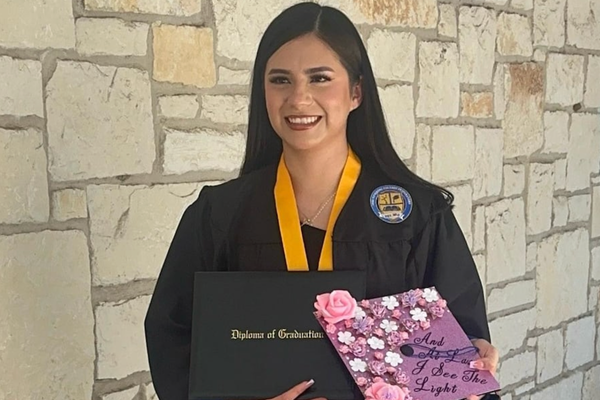Despite an overdose epidemic that killed 107,000 people last year, nearly 9 in 10 Americans who need medication to treat their addiction to deadly opioids aren’t receiving it.
Surprising new results from a first-of-its-kind study in Rhode Island could hold a key to getting addiction medication to more people who need it: allowing patients to get prescriptions at their local pharmacy rather than a doctor’s office. The change would particularly help those with low incomes who lack housing and transportation, the study found.
The Biden administration and states have been working to reduce barriers to addiction treatment. And state officials say they plan to use a chunk of the $26 billion they will receive from pharmaceutical companies in opioid settlement funds to increase access to addiction medication.
But in the more than two decades since the lifesaving addiction medication buprenorphine has been available, most of the nation’s more than 900,000 doctors have been unwilling to prescribe the medication. Experts cite stigma and a lack of understanding of addiction medicine as the reasons for the reluctance.
Those doctors who do prescribe buprenorphine often have long waits for appointments, and many take only a few patients.
The new research conducted by Brown University showed that patients who received buprenorphine for their opioid addiction from pharmacists at specialized drug stores in the Providence area stayed in treatment longer than those who saw doctors in a clinic or private practice.
Co-author Dr. Josiah Rich, professor of medicine and epidemiology at Brown, said he and his colleagues set out to show that pharmacists were willing and able to counsel addiction patients and provide the medication.
“We were surprised to find that patients actually preferred to receive their treatment from pharmacists,” he told Stateline.
In the study, 100 patients started taking buprenorphine after visiting specially trained pharmacists at six retail pharmacies in the Providence area. From that group, 58 patients volunteered to be randomly assigned either to a clinic or doctor’s office for continued care or to keep visiting the pharmacy for check-ins and refills.
One month later, 89% of patients assigned to a pharmacy continued to show up for their medication and consultation, compared with only 17% of those who received buprenorphine the usual way — in a clinic or doctor’s office.
“What we have in this epidemic is a workforce issue,” Rich said. “We don’t have enough bodies prescribing buprenorphine. Physicians have had more than 20 years to go ahead and prescribe it for their patients with opioid use disorder and the vast majority have said, ‘No thank you.’”
According to a 2020 report from the U.S. Department of Health and Human Services, 40% of counties do not have a single health practitioner who can prescribe buprenorphine.
From 2000 to 2016, only physicians could prescribe buprenorphine, and only after they completed eight hours of training and received permission from the Drug Enforcement Administration. When the federal government authorized the nation’s roughly 235,000 nurse practitioners and 133,000 physician assistants to prescribe buprenorphine beginning in 2016, the number of people receiving the medication rose substantially, Rich said.
Allowing pharmacists, who number more than 315,000, to prescribe and administer the drug could “take a huge bite out of the epidemic,” he said.
Almost 9 in 10 Americans live within five miles of a retail pharmacy, according to a study in the Journal of the American Pharmacists Association.
“Pharmacists are the most highly trained and underappreciated health professionals we have, and they are in the trenches,” Rich said. “They see what’s going on out there. We need them now and apparently, they’re up for the task.”
State support
In Rhode Island, the pharmacist program was conducted in collaboration with an assigned doctor whom the pharmacist consulted by phone after initially talking to and assessing a patient. The prescription was signed by the supervising physician and subsequently renewed by the pharmacist.
If states try to ramp up similar programs, experts say, the sticking point will be how to cover the pharmacists’ time consulting with patients. Under Medicaid, the federal-state program for low-income patients, pharmacists are not technically considered health care providers and are, therefore, not eligible for reimbursement for their services.
For pharmacist-based addiction treatment programs to take off, states would likely need to amend their Medicaid programs to include pharmacists as providers.
In addition, 11 states — Alabama, Florida, Georgia, Kansas, Mississippi, North Carolina, South Carolina, Tennessee, Texas, Wisconsin and Wyoming — have yet to approve the expansion of their low-income health programs under Obamacare to cover adults with low incomes.
Short of expanding Medicaid and allowing pharmacists to bill for their time, states could use opioid settlement dollars to fund a pharmacy-based addiction treatment program, Rich and others suggested.
Removing obstacles
Other recent efforts at the federal and state levels also have targeted the opioid epidemic.
In a move aimed at reducing overdose deaths, an expert panel of advisers to the Food and Drug Administration voted earlier this month to recommend that the overdose antidote naloxone be sold over the counter in pharmacies without a prescription.
If approved by the federal agency, it would allow pharmacies to offer the immediate life-saving drug to anyone who is using drugs or knows someone who is.
Fire and EMS personnel, with the help of Washington, D.C., police, transport a man feeling the effects of synthetic drugs to an ambulance. Overdose patients have at least a 1 in 10 chance of dying from a subsequent incident in the following year.
In another action aimed at stanching overdose deaths, President Joe Biden signed a bill eliminating the requirement that medical providers obtain special permission from the Drug Enforcement Administration to prescribe buprenorphine. Use of buprenorphine and other addiction medications has been shown to reduce the likelihood of experiencing an overdose by at least 50%.
Advocates for addiction patients say that doing away with the requirement could reduce much of the stigma within the health care community connected to prescribing buprenorphine.
Rhode Island experiment
Allowing patients to walk into a pharmacy and ask to get started on buprenorphine, or start retaking it after they have relapsed or misplaced their medication, could further reduce the stigma of addiction treatment, advocates say.
Andrew Terranova, pharmacy manager at Genoa Healthcare in Providence, Rhode Island, participated in the Brown University pilot. He said he’s still serving many of the patients he treated during the trial, which was conducted from February through April 2022.
Terranova said his patients told him they preferred receiving treatment at the pharmacy instead of at a clinic or doctor’s office because they could walk in any time of day and immediately see the pharmacist and pick up their prescriptions.
It’s also more convenient, he said. When patients go to a doctor’s office or clinic, they typically have to make a second trip to a pharmacy to pick up their medication.
“My experience with patients,” Terranova said, “showed me that many people seeking treatment face homelessness, stigma, judgment and economic barriers every day. So, coming into a pharmacy and being greeted by a pharmacist who wants to sit down with you and talk about being healthy was very much appreciated.”
In the Brown University study, a third of patients identified as Black, Indigenous or persons of color. Nearly half lacked a permanent residence.
According to the Substance Abuse and Mental Health Services Administration, drug use is highest among American Indians and Alaska Native, multiracial and Black people.
Pharmacies also offer flexibility that’s not always available at a doctor’s office. Terranova recalled a young woman who lived in a shelter and came to the pharmacy with her kids every day before work to pick up her medication because she didn’t have a safe place to store it in the shelter. She knew she couldn’t have done that at a doctor’s office, he said.
Overall, Terranova said he and the other pharmacists at his pharmacy found the Brown University program rewarding. “The improvement we saw and our interactions with patients, and to feel their gratefulness for getting help in a way and manner they weren’t used to, was extremely rewarding,” he said.
“I’d be more than willing to jump in and keep helping addiction patients if the program were to ramp up,” he said. “We’d all be willing to participate again and continue what we started.”
———







